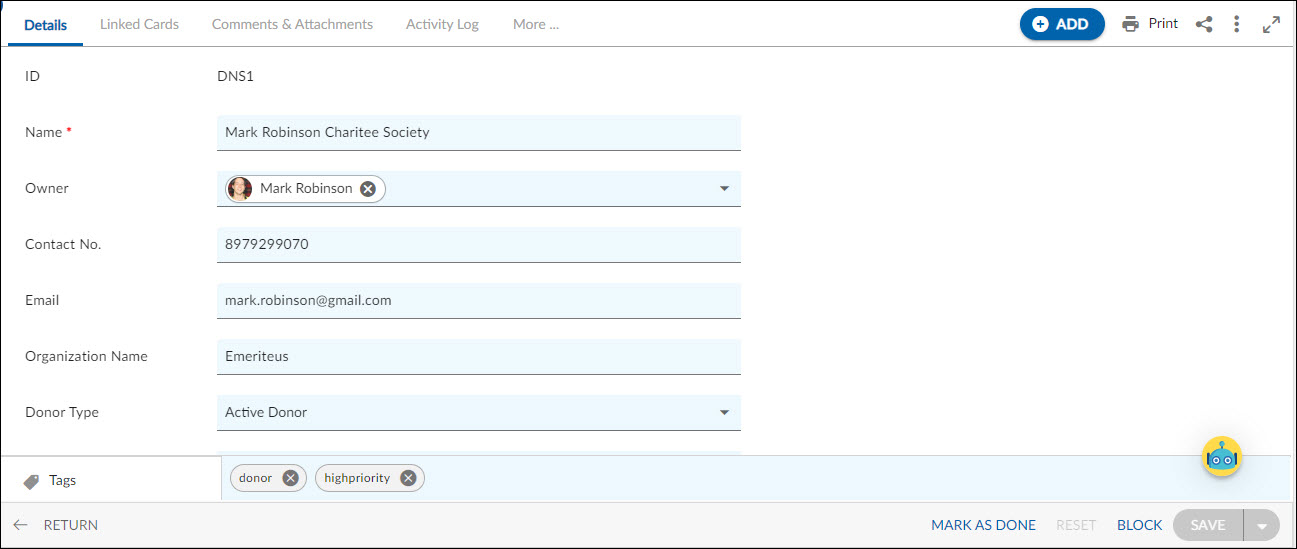In this article, we will help you to understand how to add and manage donors.
|
Skip Ahead to: |
Overview
Donors play a significant role. As a donor, you have the ability to make a difference in the lives of others and drive meaning. Not only supporting but also contributing to initiatives through your donations. Donors act as a catalyst for progress, helping to address societal challenges, promoting education, supporting healthcare, protecting the environment, and uplifting communities. As a donor, support organizations to achieve their missions and bring about transformative outcomes.
Note: The Donors menu is only available for the Fundraising and CRM template.
Navigation
In the left navigation panel, expand the Recent Projects menu and select any project. Hover over the Project breadcrumb at the top, expand the Execute module, and select Donors.
Steps to Add Donors
- To add Donors from the listing view, click the ADD button.
- Enter the relevant attributes for the creation of donors:
- Name: Enter the name of the donor.
- Owner: Assign a card owner for the Social Media Post.
- Contact No.: Enter the contact details of the donor.
- Email: Enter the email address of the donor.
- Organization Name: Enter the organization details of the donor.
- Donor Type: Select the donor type as active or potential donor.
3. Fill in the other remaining attributes and click the SAVE button.
To know how to quickly add the Donors from the left navigation panel, click here.
Default Sections in Donors
The default sections are Details, Linked Cards, Comments & Attachments, and Activity Log.
Once the Donor is created, the following tab is visible:
- Details: The Details section displays, gathers, and tracks all information related to the Donor.
- Comments & Attachments: The members can add comments related to the project item which are then listed in the Comments section. When a project item requires more data for reference, you can attach files that can be downloaded, edited, and uploaded. For more information, click here.
- Linked Cards: It helps you to set parent-child hierarchy and the relationship between themes/epics and workitems and trace them while working with them. For more information, click here.
- System Fields: All the system-generated fields or uneditable fields are listed in the System Fields segment.
- Activity Log: The Activity log displays the list of operations in reverse chronological order for activities performed such as updating, closing, reopening, etc. In the Activity Log, you can view the various versions and the differences between the two versions of a workitem. For more information, click here.

